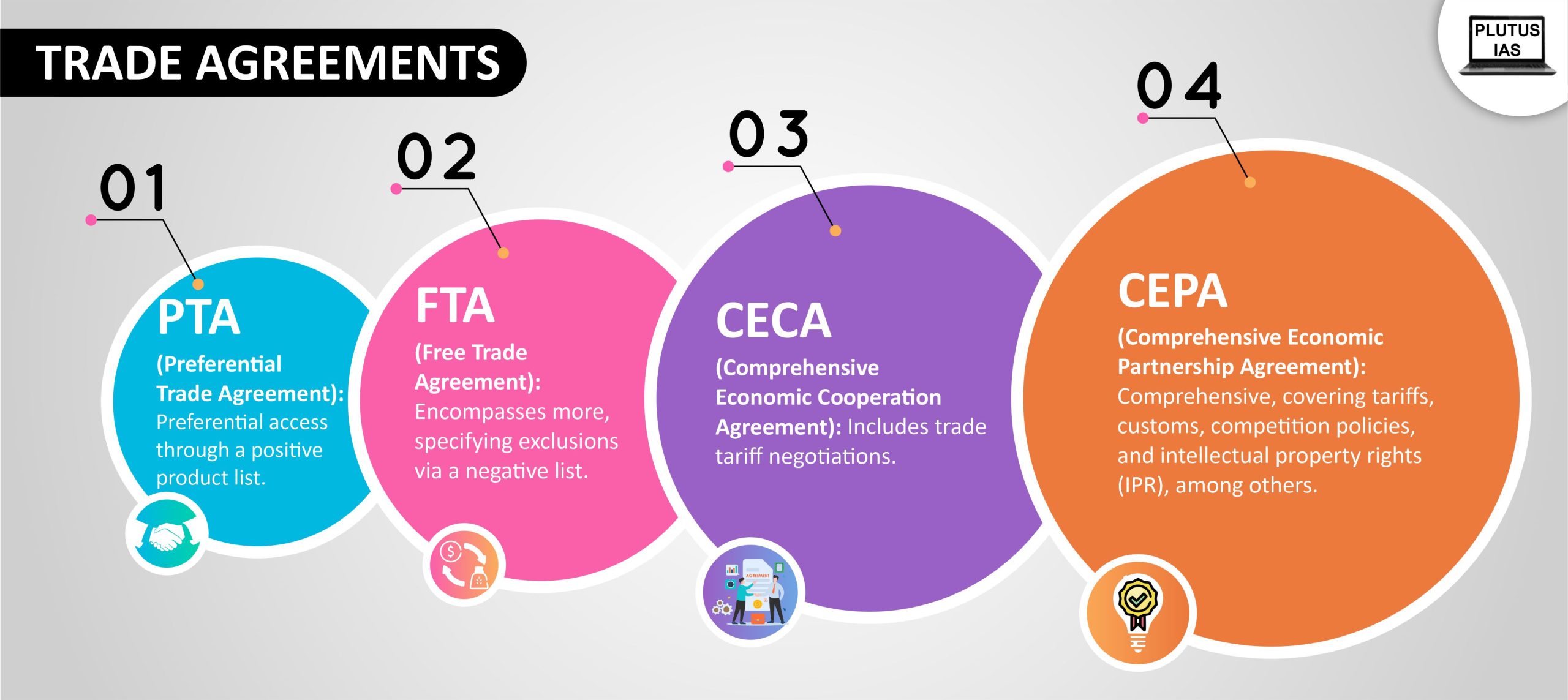17 Oct Regional Comprehensive Economic Partnership (RCEP)
This article covers “Daily Current Affairs” and the topic details “Regional Comprehensive Economic Partnership (RCEP)”. This topic has relevance in the “International Relations” section of the UPSC CSE exam.
For Prelims:
What is the Regional Comprehensive Economic Partnership (RCEP)?
For Mains:
GS2: International Relations
What are the impacts of RCEP?
Why in the news?
Sri Lanka and Bangladesh are currently evaluating the possibility of becoming members of the Regional Comprehensive Economic Partnership (RCEP).
About Regional Comprehensive Economic Partnership (RCEP)
- The RCEP is a free trade agreement that brings together a group of countries to promote economic cooperation and reduce trade barriers.
- It is one of the largest trade agreements in the world. RCEP was signed in November 2020 and includes 15 member countries:
- ASEAN member countries: Brunei, Cambodia, Indonesia, Laos, Malaysia, Myanmar, the Philippines, Singapore, Thailand, and Vietnam.
- Plus Five countries: China, Japan, South Korea, Australia, and New Zealand.
- The population of the 15 member countries amounts to approximately 30% of the world’s total (2.2 billion people), contributing to around 30% of the global GDP ($29.7 trillion).
- Functioning of RCEP:
- The RCEP is expected to eliminate a range of import tariffs within 20 years.
- It includes intellectual property, telecommunications, financial services, e-commerce and professional services provisions.
- India opted out of the RCEP negotiations in November 2019 over “significant outstanding issues.”

India chose not to join the RCEP for several reasons:
- Protection for Domestic Industry and Agriculture: India wanted more safeguards for its industries and farms against a flood of imports, especially from China, but RCEP didn’t provide those protections.
- Unresolved Concerns: India had significant concerns throughout the negotiations, which were not addressed by the deadline for signing the deal. Many of these concerns were related to China’s role in the agreement.
- Trade Imbalance with China: India already had a substantial trade deficit with China, and there were worries that RCEP could worsen this imbalance by flooding India with Chinese goods and products from other countries.
- Tensions with China: The recent conflict in the Galwan Valley had strained India’s relationship with China, making it a major factor in India’s decision.
- Issues with Proposed Agreement Provisions: India was concerned about certain aspects of the proposed agreement, including fair access to markets, rules of origin, dispute resolution mechanisms, and the impact on domestic industries.
Potential Impacts:
- Negative Impacts:
- Reduced Trade and Investment: India’s economy could see decreased trade and investment with RCEP nations, impacting both sides negatively.
- Chinese Competition: China’s regional influence may grow, posing challenges to Indian exporters and foreign investment prospects.
- Reduced Regional Integration: The absence of India could impede progress toward greater regional integration in Asia.
- Geopolitical Tensions: India’s choice might increase regional geopolitical tensions, particularly in light of its historical rivalry with China. It could be seen as a lack of willingness to cooperate.
- Positive Impacts:
- Protection of Domestic Industries: India’s domestic sectors, especially agriculture and manufacturing, could be shielded from competition with cheaper Chinese imports.
- Time for Domestic Reforms: With the saved time from not joining RCEP, India could focus on reforming its domestic economy to enhance competitiveness.
- Potential for a Better Future Deal: India might negotiate a more favourable agreement with RCEP members once its concerns have been addressed.
Notably, India has entered into bilateral free trade agreements (FTAs) with several RCEP members, which could offset some of the negative impacts of its absence from RCEP. However, it’s crucial to acknowledge that FTAs have a narrower scope than RCEP, which covers a broader range of issues encompassing goods, services, investment, and trade rules.
Sources: Sri Lanka, Bangladesh mull over joining RCEP bloc – The Hindu
Download plutus ias current affairs eng med 17th Oct 2023
Q1. With reference to the Regional Comprehensive Economic Partnership (RCEP), consider the following statements:
- RCEP is a customs union that brings together 15 Asian nations.
- New Zealand is a member of RCEP.
- RCEP includes provisions related to financial services, e-commerce and professional services.
Which of the statements given above is/are correct?
(a) 1 and 2 only
(b) 2 and 3 only
(c) 3 only
(d) None
Q2. Consider the following:
- PTA – Encompasses specifies exclusions through a negative list.
- FTA – Offers access via a positive list.
- CECA – Covers trade tariff negotiations.
- CEPA – Includes tariffs, customs, competition policies, IPR and others
How many of the abovementioned pairs are correct ?
(a) Only one
(b) Only two
(c) Only three
(d) All Four
Q3. Discuss the Regional Comprehensive Economic Partnership (RCEP) and its significance in the context of international trade and India’s decision to abstain from the agreement.




No Comments